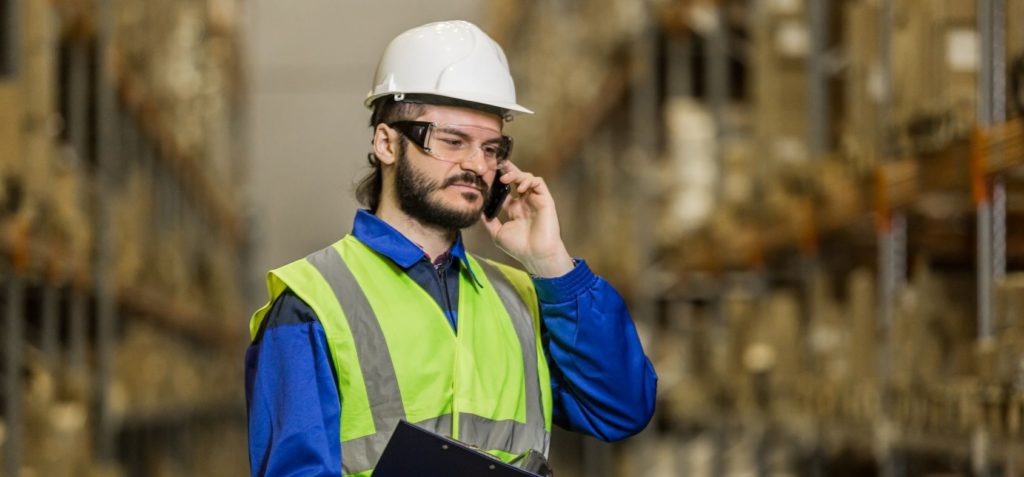A lone worker is someone who works alone and doesn’t have any colleagues nearby. It is a company’s responsibility to monitor the safety of a lone worker.
One of the traditional methods used by many employers to do this is the lone worker call check. This is a phone call to check on the safety of employees who are working alone.
The call check is scheduled at regular intervals, such as once every two hours. It can be done by the lone worker calling their supervisor to report that they are okay or the person in charge making the call to the lone worker.
This method of monitoring lone workers has many shortcomings. In this article, we will cover some of the reasons why this method is not recommended. We will also look into technology that provides better alternatives to check in on the safety of your lone workers.
#1 Call checks are disruptive
Safety call checks can be disruptive. This is because lone workers need to make call checks at stated intervals without considering the workflow at hand. If the call check is initiated by someone who is not in the same location, the caller has no way of knowing if the call is disrupting workflow.
These distracting or disruptive call checks break the flow of work, which can interrupt serving customers or affect productivity.
While this might not seem like a huge issue, it can make the lone worker more likely to forget making a call check, delay making a call check, or miss receiving the call check from their supervisor if things get really busy.
#2 Call checks can be dangerous or unavailable for some types of work
Other than being distracting or interruptive, call checks can be dangerous for some types of work, such as lone workers who drive or operate heavy machinery.
In these cases, the act of making or receiving a call while on duty is a hazard in itself. This defeats the purpose of checking in on the lone worker’s safety.
Call checks are also not available for those working in specific environments, such as airport ground services. In this scenario, cell phone and radio signals can interfere with the airport communication systems. Therefore, it is not possible to perform call checks with cell phones or walkie talkies.
Another scenario where call checks are unavailable is for lone workers who work in conditions that cell phones are not designed for.
#3 Call checks are prone to human error
Call checks are also prone to human error. Lone workers or supervisors may forget to make or receive a call check because they were too busy, distracted, or tired.
If the delaying or missing call checks becomes habitual, it could create a culture of expecting late call checks. This can be dangerous because if a lone worker is truly in danger, a missed call check may at first be dismissed. When enough time has passed without a call check for the monitoring team to realise something is amiss, precious time to send help has been lost.

#4 Single network SIM card
Some mobile phones operate on a single network SIM card that relies on the coverage of a single network. The danger this presents when it comes to using call checks for lone working monitoring is that lone workers can become unreachable due to low signal coverage.
The result is they may not be able to get the help they need during an emergency in a timely manner. Thus, safety devices with a roaming SIM that has the ability to connect to multiple networks and use the network with a higher signal, are much better prepared for these use cases—especially in outdoor conditions or remote areas, or even during bad weather.
#5 False alarms
Many of the points mentioned thus far can lead to false alarms. For example, human error, a cell phone that has run out of battery, or the inability to connect a call due to low signal could trigger a false alarm.
A false alarm is when the monitoring team believes the lone worker is in danger because they cannot reach them via call checks. Escalation procedures are then executed, such as sending rescue teams or calling nearby local authorities to check in on the lone worker at the physical location.
These escalation procedures cost time and resources, which are wasted on false alarms.
Worse, resources from rescue teams or local authorities directed towards a false alarm could have meant that someone else in danger didn’t get the help they needed sooner. This can cost the company penalties or fines as compensation.
Furthermore, too many false alarms can create a “the boy who cried wolf” situation, where alarms are not taken as seriously during an actual emergency.
#6 Gaps between check-in times can delay help when needed
Even if everything went smoothly with call checks, there is still one huge shortcoming. The gaps between check-in times can mean an emergency goes unnoticed for a long time.
Let’s say a company’s policy is to do call checks every two hours. If something happens to the lone worker half an hour after a call check, it will be another hour and a half before the team realises the lone worker is in danger.
That is a long gap for the lone worker not to receive assistance. If it’s a physical or health issue, such as falling from heights or having a heart attack, this delay in getting help could be the difference between life or death.
The same issue is at play regarding violence in the workplace. If the lone worker finds themselves in a threatening situation, they may not be able to make an emergency call on their phone. Gaps in check-in times result in a delay before anyone realises the lone worker is in danger.
Issues from compromised lone worker monitoring
If your company relies on call checks, these shortcomings will compromise your lone worker monitoring and can lead to a few issues. Some common issues include endangering your lone workers and possible non-compliance with laws and regulations, of which the latter could lead to penalties or fines.
Leveraging technology to improve lone worker safety
If your company relies on call checks, it’s time to switch to a monitored app or safety device for lone workers. This simple switch can greatly improve how you monitor your lone workers to keep them safe. Let’s take a quick look at Vatix’s lone worker safety solutions to see how.
Safe Pro Device
Industry-leading alarm device with:
- SOS button—Lone workers can easily send an SOS immediately and discreetly.
- Fall detection (Man-down alarm)—Receive alerts without delay caused by gaps between call checks.
- Two-way audio with roaming SIM—Activated by SOS button or man-down alarm with multi-network coverage for more reliable signals.
- All-day battery life—deal for long shifts or work in remote areas.
- Real-time GPS—Rescue teams will be able to locate the exact location of the lone worker who needs help.
Lone Worker App
iOS and Android lone worker safety app with advanced notification features. Features include:
- Automated and customisable timed check-ins—Reduces human error related to manual call checks.
- Voice and note updates—Adds context to the working situation or emergency report.
- BS 8484:2016 accreditation—Ensures compliance with laws and regulations.
Improve lone worker safety in your workplace
The workplace can be a dangerous place, especially for lone workers. It’s essential to make sure your lone working monitoring system is as optimal as it can be.
To discover how you can improve lone worker safety in your workplace, contact us to get a demo of our lone working safety solutions and experience how it works in action.

